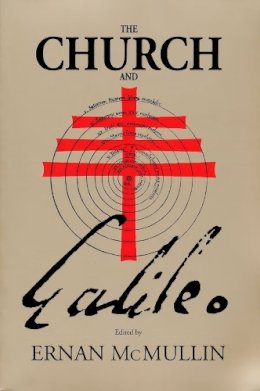
The Church and Galileo (REILLY CTR/SCI & HUM)
Ernan McMullin
"The ‘Galileo affair’ has been the object of innumerable studies, which (taken as a whole) have spread nearly as much fog as they have sunshine. The studies in this volume, many of them based at least in part on newly discovered or released sources, have convincingly blown away much of that fog. This is easily the most important volume on the ‘Galileo affair’ ever produced." –David C. Lindberg, University of Wisconsin
This collection of first-rate essays aims to provide an accurate scholarly assessment of the relationship between the Roman Catholic Church and Galileo. In 1981, Pope John Paul II established ... Read more
Contributors provide careful analyses of the interactions of the Church and Galileo over the thirty years between 1612 and his death in 1642. They also explore the attitudes of theologians to the Copernican innovation prior to Galileo's entry into the fray; survey the political landscape within which he lived; assess the effectiveness (or otherwise) of censorship of his work; and provide an analysis and occasional critique of the Church’s later responses to the Galileo controversy. The book is divided into three sections corresponding to the periods before, during, and after the original Galileo affair. Particular attention is paid to those topics that have been the most divisive among scholars and theologians. The Church and Galileo will be welcomed by all those interested in early modern history and early modern science.
Contributors: Michel-Pierre Lerner, Irving A. Kelter, Michael Shank, Ernan McMullin, Annibale Fantoli, Mariano Artigas, Rafael Martínez, William R. Shea, Francesco Beretta, Stéphane Garcia, John Heilbron, Michael Sharratt, and George Coyne.
Show LessProduct Details
About Ernan McMullin
Reviews for The Church and Galileo (REILLY CTR/SCI & HUM)
Times Literary Supplement "This collection of essays certainly goes some way towards providing an intellectual and political context for Galileo's confrontation with the Church between the critical years of 1616 and 1633. In the process, ... Read more
